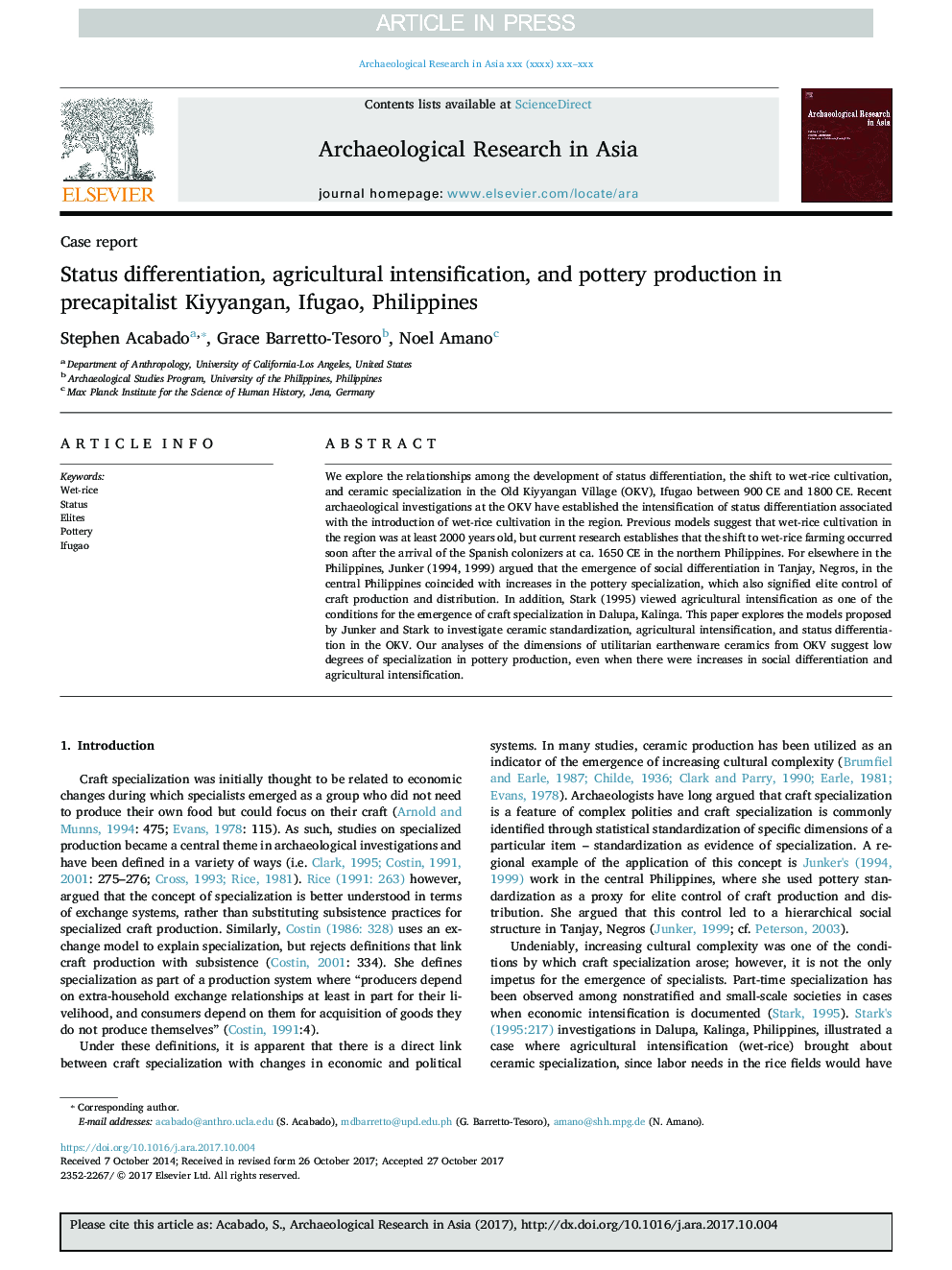| Article ID | Journal | Published Year | Pages | File Type |
|---|---|---|---|---|
| 8942496 | Archaeological Research in Asia | 2018 | 15 Pages |
Abstract
We explore the relationships among the development of status differentiation, the shift to wet-rice cultivation, and ceramic specialization in the Old Kiyyangan Village (OKV), Ifugao between 900Â CE and 1800Â CE. Recent archaeological investigations at the OKV have established the intensification of status differentiation associated with the introduction of wet-rice cultivation in the region. Previous models suggest that wet-rice cultivation in the region was at least 2000Â years old, but current research establishes that the shift to wet-rice farming occurred soon after the arrival of the Spanish colonizers at ca. 1650Â CE in the northern Philippines. For elsewhere in the Philippines, Junker (1994, 1999) argued that the emergence of social differentiation in Tanjay, Negros, in the central Philippines coincided with increases in the pottery specialization, which also signified elite control of craft production and distribution. In addition, Stark (1995) viewed agricultural intensification as one of the conditions for the emergence of craft specialization in Dalupa, Kalinga. This paper explores the models proposed by Junker and Stark to investigate ceramic standardization, agricultural intensification, and status differentiation in the OKV. Our analyses of the dimensions of utilitarian earthenware ceramics from OKV suggest low degrees of specialization in pottery production, even when there were increases in social differentiation and agricultural intensification.
Related Topics
Social Sciences and Humanities
Arts and Humanities
History
Authors
Stephen Acabado, Grace Barretto-Tesoro, Noel Amano,
